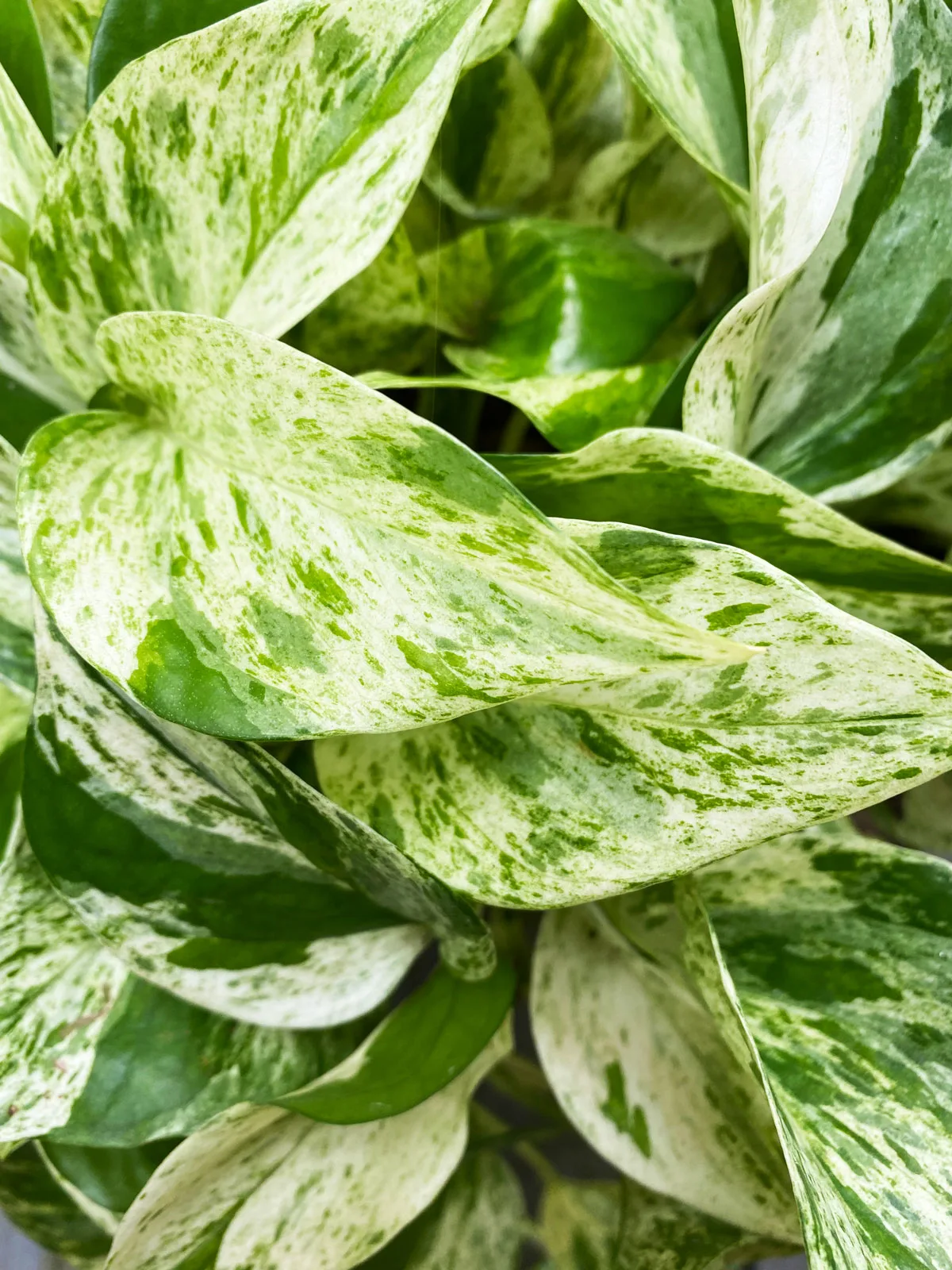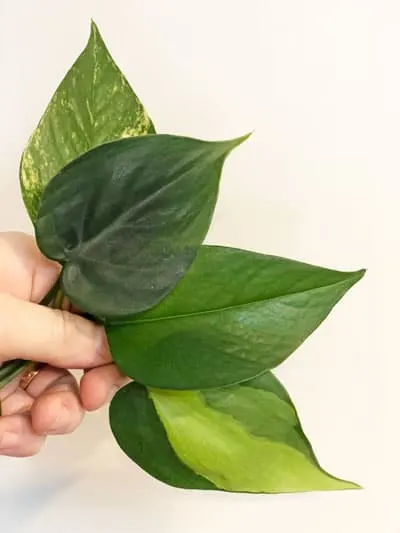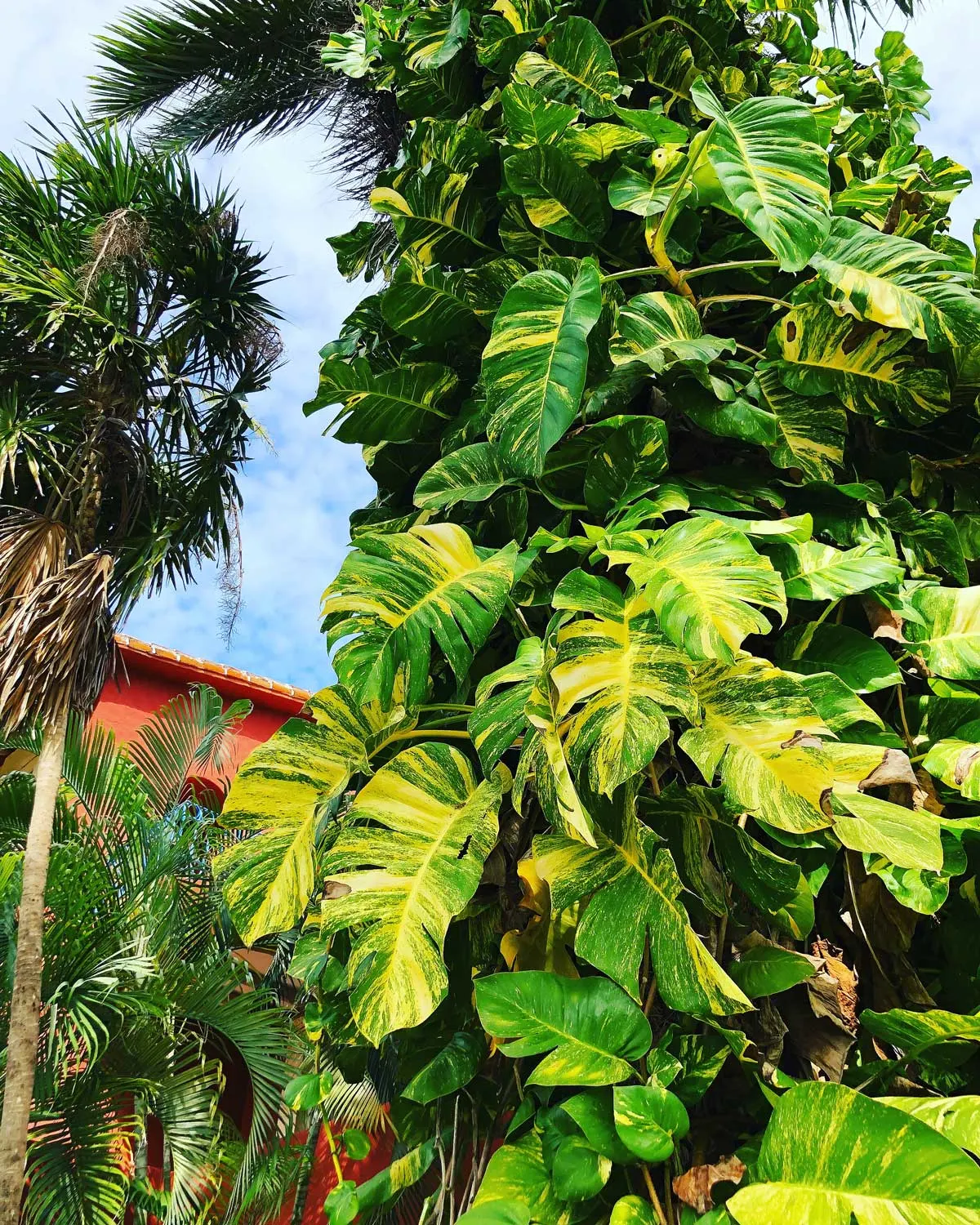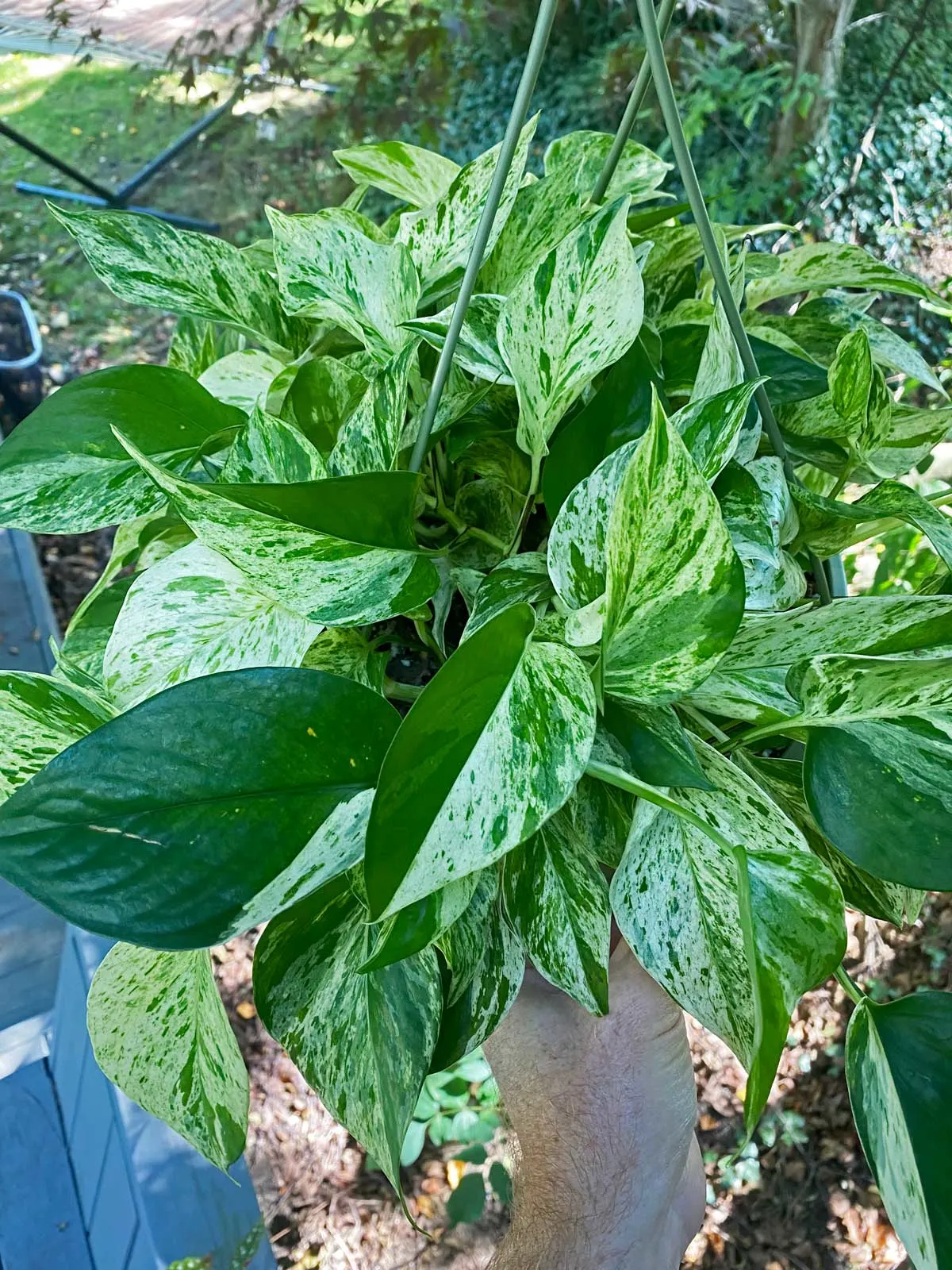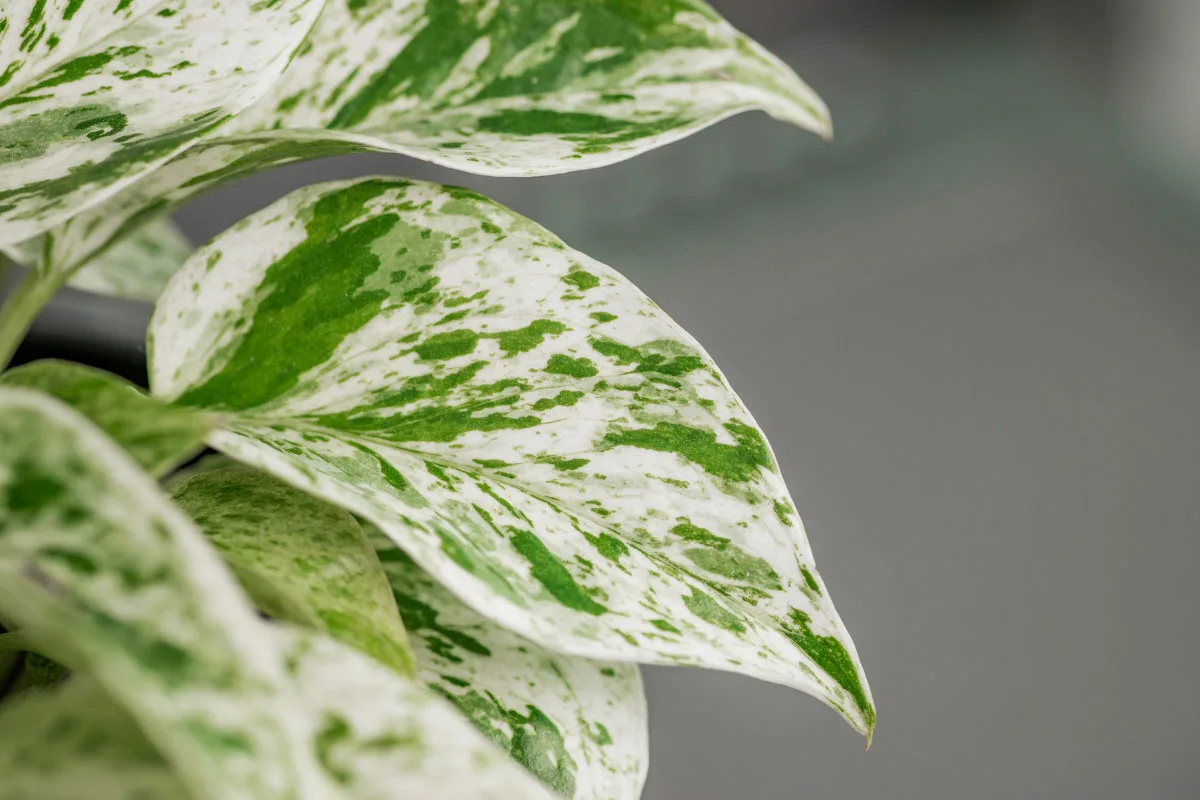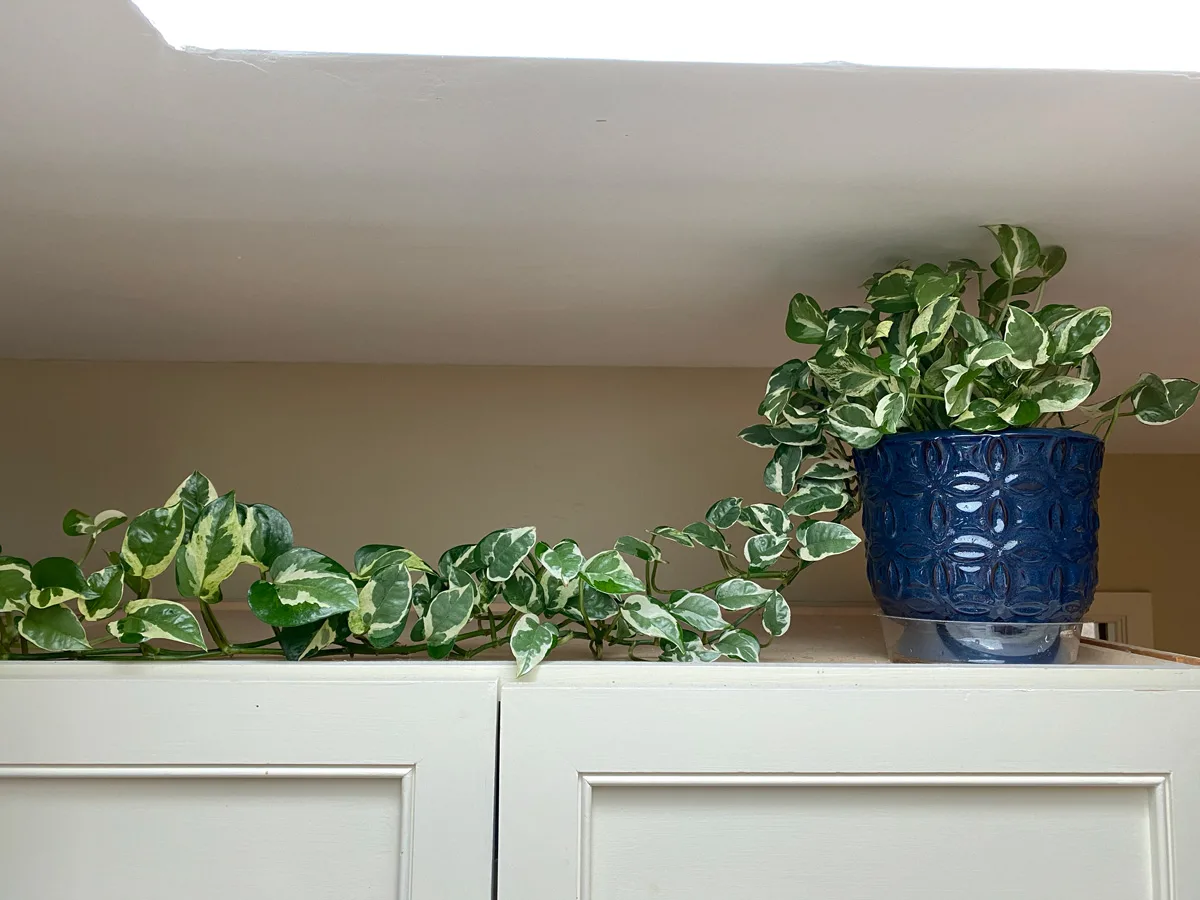Some of the links in this post may be affiliate links.
Jade Pothos is a classic green Pothos that is super easy to grow and one of the best low light houseplants that you can get your hands on. It is very similar to Golden Pothos, except Jade Pothos has no variegation and has plain green leaves.
As a result, it actually tolerates lower light. Keep reading to find out all about how to grow this plant indoors.
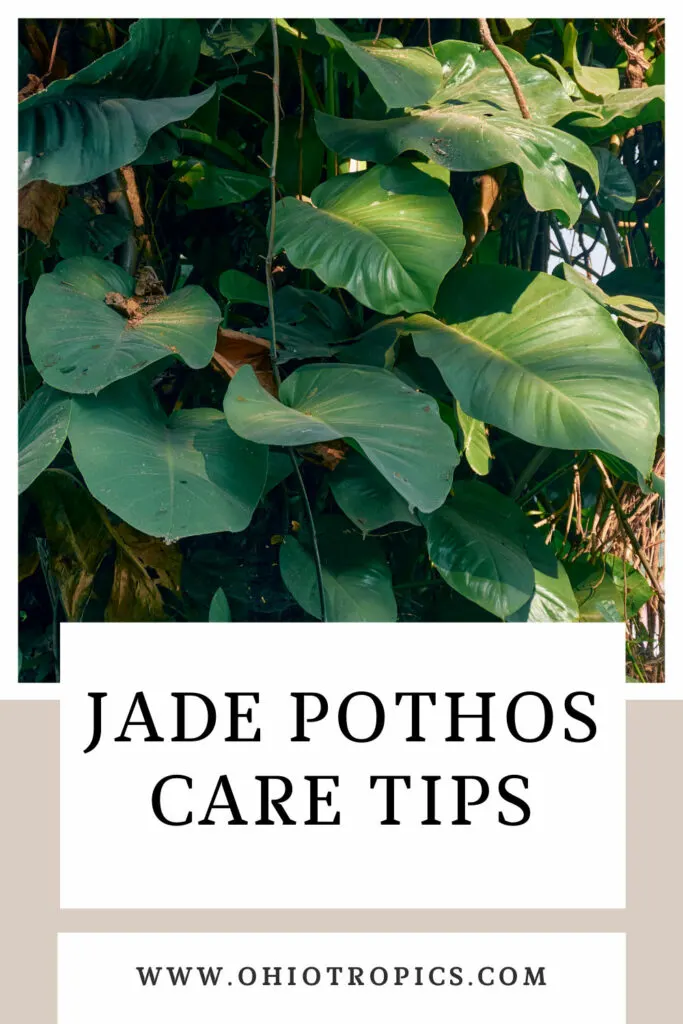
Commonly called Devil’s Ivy, Epipremnum aureum ‘Jade’ is the botanical name for this plant. The species is native to French Polynesia, although Pothos has naturalized itself in many subtropical and tropical regions around the world, where it can be quite invasive.
Like any Pothos, as it climbs up a support (like a tree, or a moss post in a pot), the leaves will get bigger and bigger.
Take a look at the size of these leaves of a Jade Pothos that is climbing up a tree.
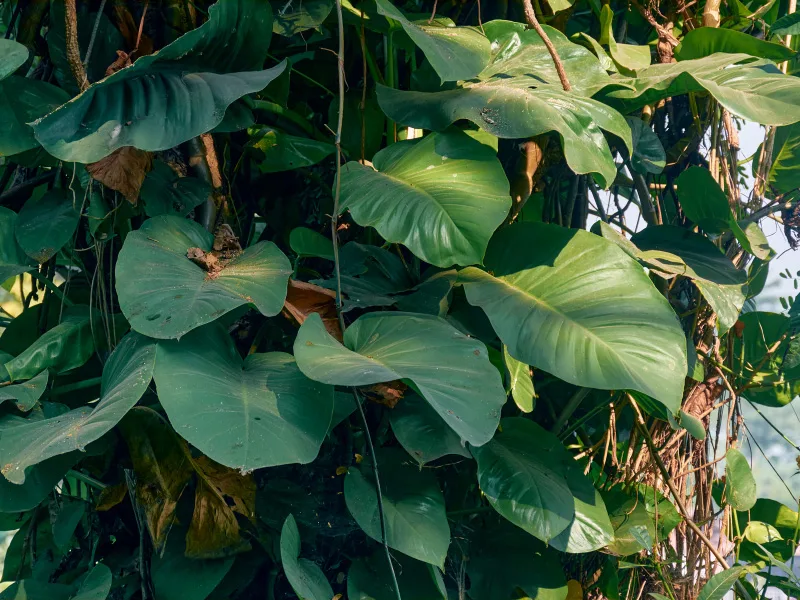
Table of Contents
JADE POTHOS CARE
LIGHT
Unlike many varieties of Pothos, Jade Pothos is not variegated, so it will tolerate lower light than the highly variegated varieties like Snow Queen and some others.
This plant is one of the few plants that I am comfortable placing far from a window. For best growth though, place it in front of a window.
Windows that get no direct sun would be perfectly fine. Some direct sun is also beneficial, such as right in front of an Eastern or Western facing window.
All day sun is not the best for these plants, so you can set it a little further back from a really sunny window, or you can even diffuse the light with a sheer curtain or partially closed blinds.
SOIL
A great general blend of soil for any Pothos is the following:
3 parts of an all-purpose potting mix (like Miracle Gro or Espoma), and 1 part perlite.
This blend allows for suitable moisture retention, but also will drain better than using a potting mix as-is. I find that most potting mixes either need some perlite or
If you’re looking for an amazing potting mix that you can use straight out of the bag for your Pothos, check out the Tropical Climber Soil Blend from Oh Happy Plants. This is an amazing mix and you will get 10% off at checkout automatically if you use my link.
REPOTTING
Only go up one pot when you repot, and only repot when your Jade Pothos is actually root bound. For example, if your plant is currently in a 6 inch diameter pot, only go up to an 8 inch diameter pot.
If you go any larger, the excess volume of soil will take too long to dry out. Depending on your conditions (low light, poorly draining soil, etc), this could be a recipe for root rot.
It is better to keep your plant in a smaller pot than a larger one.
Lastly, when you do take your plant out of its pot, make sure that you loosen up the root ball before you place it in a bigger pot (and make sure your pots always have drainage holes).
Loosening the roots and teasing them free will make it easier for them to grow into the soil in your new pot.
WATER
Pothos like relatively moist soil, so try and make sure that you never let your soil dry out completely.
As a good rule of thumb, use your finger to judge soil moisture and wait until the top inch of soil is completely dry before watering again thoroughly.
Never let your plant sit in excess water for extended periods of time. Always discard water that accumulates in your plant’s saucer or inside of any decorate pot that your plant is placed in.
FERTILIZER
My fertilizer of choice for all my Pothos and tropical plants is Dyna-Gro Grow.
It’s an amazing, complete fertilizer with all the macro and micro nutrients that are necessary for plant growth, and it’s urea-free so it won’t burn your plants.
I’ve achieved wonderful results with using Dyna-Gro Grow over time, and I know you will too!
TEMPERATURE
These are warm growing plants so try not to go below 60°F (15.5°C). They can comfortably take temperatures up to about 85°F (about 24°C).
If you put your Pothos in a cool room, it will sulk and not grow much. Also avoid any cold drafts.
HUMIDITY
Jade Pothos is not fussy at all about humidity, and average indoor humidity is just fine. It will even tolerate low humidity during wintertime if you run forced air heat.
Of course, they will appreciate increased humidity if you can, but it’s not a must at all.
JADE POTHOS PROPAGATION
Propagating Jade Pothos could not be easier. Here are some tips to follow:
- Don’t make your cuttings too long or they will struggle. Keep them 4-6 inches or so long or shorter. The most efficient way to propagate is to take single node cuttings, like in the photo below.
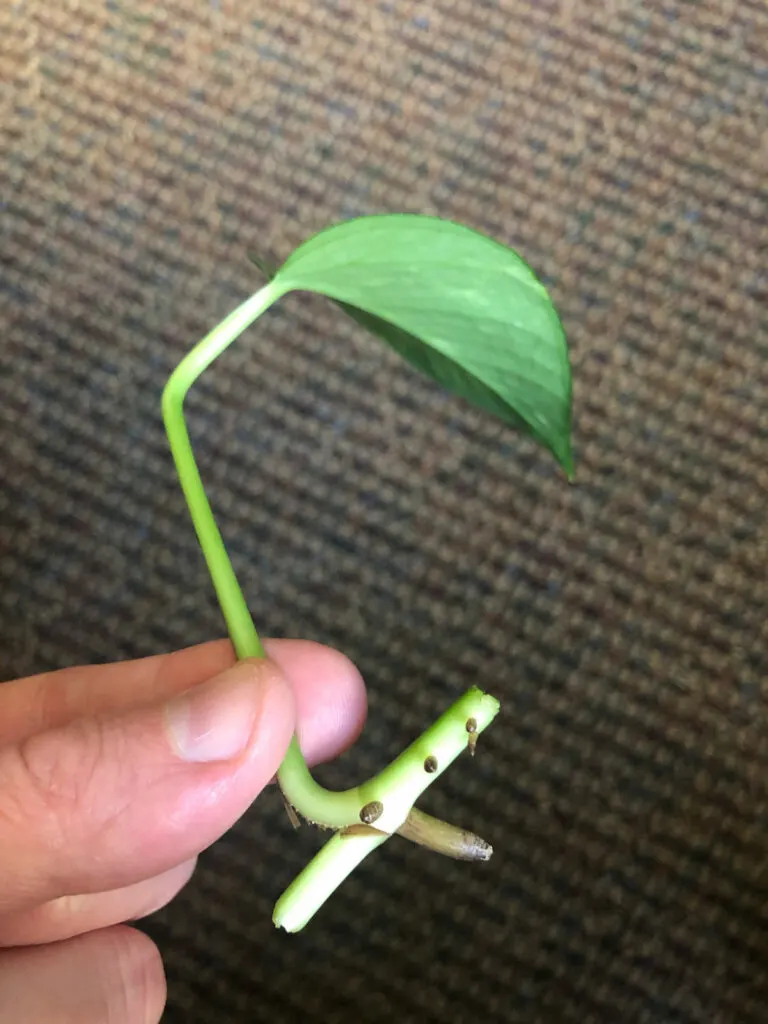
- Next, place your cuttings in water and make sure the bottom node is submerged in water. Set your propagation vessel in front of a window that gets either no direct sun, and up to 3-4 hours at the most.
- Depending on your conditions, your Jade Pothos will root in a matter of days, or even a couple weeks or so.
- Spring and Summer is the best time to propagate and will take less time during these seasons.
- Once roots are an inch long or so, go ahead and pot them up.
For a more detailed tutorial on propagating Pothos, check out my Where to Cut Pothos to Propagate blog post which includes step-by-step photos.
If you’ve had trouble propagating Pothos in the past, check out my blog post that details the top 10 reasons why you are failing at rooting Pothos cuttings.
FREQUENTLY ASKED QUESTIONS
Jade Pothos vs. Heart Leaf Philodendron
There are a few differences that will help you distinguish between a Pothos and a Philodendron. One telltale sign that you have a Heart Leaf Philodendron and not a Jade Pothos, is that a Heart Leaf Philodendron will have a cataphyll covering the node, whereas Jade Pothos does not.
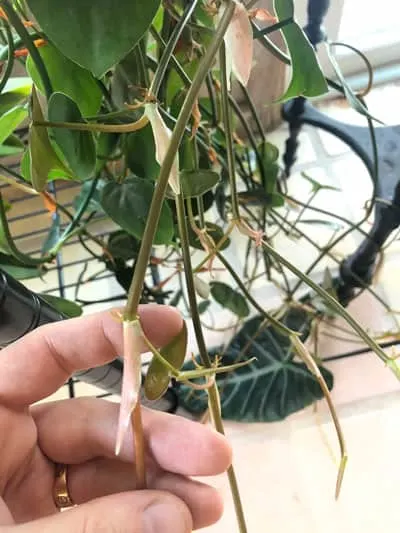
For a more detailed explanation and other differences, be sure to check out my Pothos vs. Philodendron blog post.
Jade Pothos vs. Golden Pothos
Jade Pothos and Golden Pothos look extremely similar, except Jade Pothos will have no variegation and have solid green leaves.
One thing to be aware of is if you do have a Golden Pothos and it’s in very dark conditions, it may appear to look like Jade Pothos because it may have lost its variegation under low light conditions.
Why does my Jade Pothos have yellow leaves?
Yellow leaves can be caused by a variety of factors. Probably the most common cause of yellow leaves in Jade Pothos is allowing the soil to dry out completely for too long.
In this case, the lower leaves will yellow first. Whenever you see yellow leaves, go ahead and immediately feel the soil. If it is bone dry, go ahead and give it a thorough watering.
Lastly, go ahead and remove the yellow leaves. To discover more reasons for yellow leaves, check out my blog post on causes of yellow leaves in houseplants.
What do I do with Jade Pothos aerial roots?
Pothos plants use aerial roots to attach onto tree trunks in nature. As they attach onto the tree, they climb up and eventually the leaves will get bigger and bigger.
Indoors, if you’re using a moss pole, the aerial roots will grow into the moss pole and the same effect will be achieved.
If you’re growing your plant as a hanging basket, you don’t have to do anything with your aerial roots.

